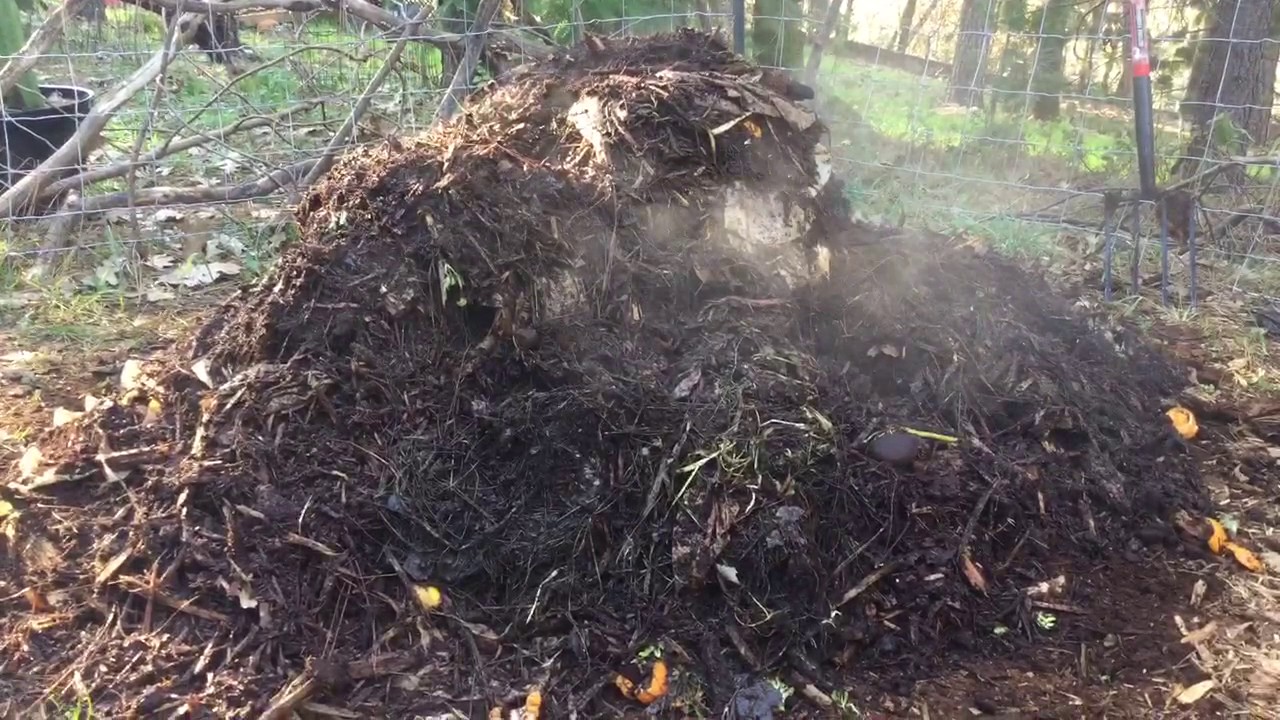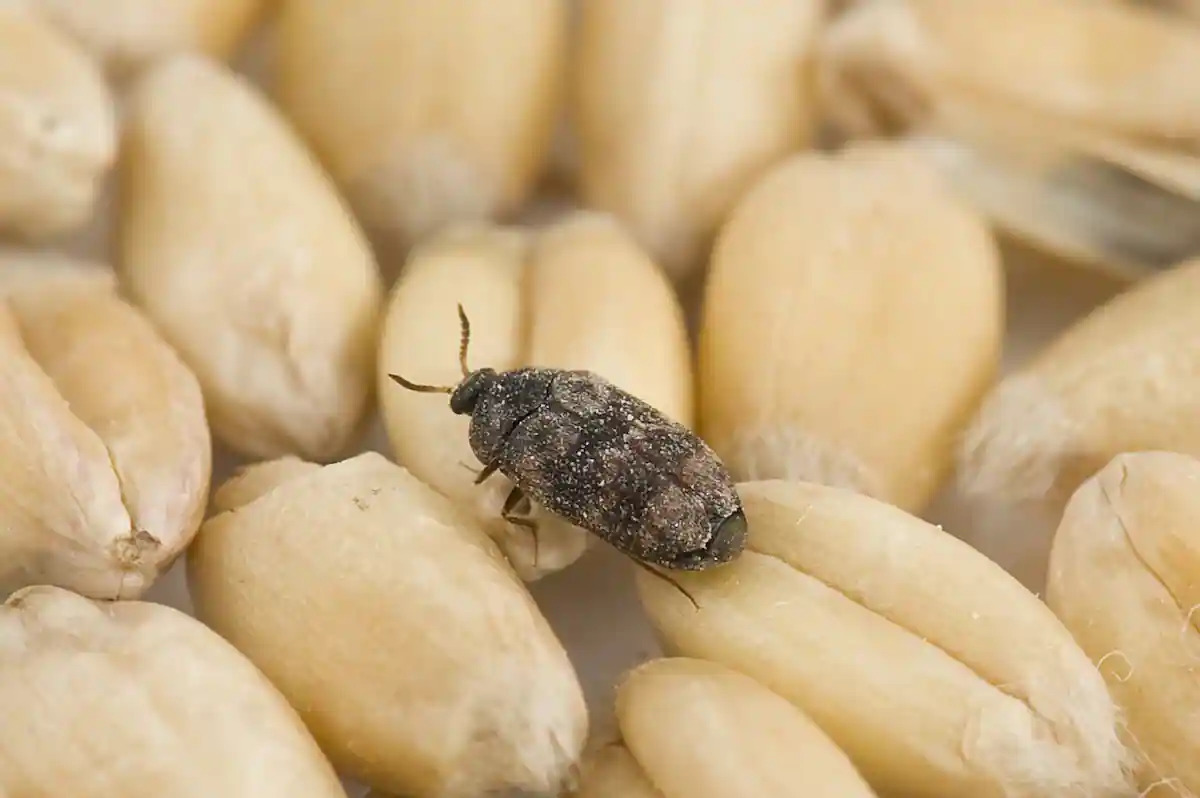Home>Gardening News and Trends>Latest News>How To Protect Wood Furniture From Insects


Latest News
How To Protect Wood Furniture From Insects
Modified: January 22, 2024
Learn the latest tips and tricks on how to protect your wood furniture from insects. Find out the best methods to keep your furniture safe and prevent infestations.
(Many of the links in this article redirect to a specific reviewed product. Your purchase of these products through affiliate links helps to generate commission for Chicagolandgardening.com, at no extra cost. Learn more)
Table of Contents
Introduction
Wood furniture is not only aesthetically pleasing but also adds warmth and character to any home or office. However, one of the biggest challenges of owning wood furniture is protecting it from insects. These pesky creatures can wreak havoc on your precious wooden pieces, causing irreparable damage if left unchecked.
Whether it’s termites, beetles, or ants, wood-damaging insects can cause significant structural damage to your furniture. They burrow into the wood, feeding on cellulose and creating tunnels, which weakens its integrity over time. Additionally, these insects can leave behind unsightly holes, sawdust, and even fungal growth.
Preventing insect infestations requires a proactive approach and regular maintenance. By taking preventive measures and implementing natural remedies, you can ensure the longevity and beauty of your wood furniture. In this article, we will explore common wood-damaging insects, signs of infestation, prevention tips, and both natural and chemical treatments.
When it comes to protecting your cherished wood furniture, knowledge is key. Understanding the signs of insect infestation and adopting preventive measures can save you from costly repairs and replacements in the long run. So, let’s dive into the world of wood-damaging insects and learn how to safeguard your furniture from their destructive habits.
Common Wood-Damaging Insects
There are several types of insects that pose a threat to your wood furniture. Familiarizing yourself with these common wood-damaging pests can help you identify and address infestations before they cause severe damage. Let’s take a closer look at some of the most prevalent culprits:
- Termites: Termites are among the most destructive insects when it comes to wood damage. These tiny insects feed on cellulose, the main component of wood, and can quickly degrade the structure of furniture. Look out for signs such as discarded wings, mud tunnels, and hollow-sounding wood.
- Wood-boring beetles: Beetles like the powderpost beetle and the furniture beetle burrow into the wood, leaving behind tiny holes and powdery sawdust. They can cause extensive damage over time, especially in softer woods.
- Carpenter ants: Although they do not feed on wood, carpenter ants excavate galleries in wood to create nests. Their presence can be indicated by piles of sawdust-like frass near furniture, and the sound of rustling or tapping within the wood.
- Powderpost termites: They are tiny, wood-boring insects that primarily infest hardwood furniture. These pests leave small holes, resembling the appearance of fine sawdust, known as frass. Powderpost termites can slowly weaken the structural integrity of your furniture.
It’s important to note that different regions may have specific wood-damaging insects that are more prevalent. Consulting with local pest control experts can help you identify the specific threats in your area and take appropriate measures to protect your wood furniture.
Signs of Insect Infestation
Early detection of an insect infestation is crucial in preventing extensive damage to your wood furniture. By being aware of the signs of infestation, you can take prompt action to address the issue. Here are some common indicators of wood-damaging insect presence:
- Holes or tunnels: Look out for small, round exit holes or tunnels on the surface of your furniture. These can be a clear indication of wood-boring insects such as termites or beetles.
- Sawdust or frass: Accumulation of fine powdery sawdust or frass around the furniture is a sign of activity by wood-boring pests. This debris consists of wood particles and insect excrement.
- Weak or hollow-sounding wood: Tap on your furniture gently and listen for a hollow sound. Infested wood may feel weak or hollow, as insects have eaten away at the inside.
- Discarded wings: Certain species of insects, like termites, shed their wings after colonizing a new area. Finding discarded wings near your furniture could indicate an infestation.
- Presence of live or dead insects: If you spot live or dead insects near your wood furniture, it’s a clear sign that they are active in the area.
- Mud tubes or trails: Termites often construct mud tubes or tunnels along walls, floors, or furniture to protect themselves. These mud tubes can be an indicator of a termite infestation.
Regularly inspect your wood furniture for these telltale signs of infestation. The earlier you detect the problem, the easier it is to resolve and minimize damage. If you notice any of these signs or suspect an infestation, it is recommended to seek professional help in assessing and addressing the issue.
Prevention Tips
Preventing insect infestations in your wood furniture is essential for its long-term preservation. By following some proactive measures, you can significantly reduce the risk of damage. Here are some effective prevention tips:
- Keep your furniture clean: Regularly dust and clean your wood furniture to remove any debris or food particles that may attract insects.
- Avoid moisture and humidity: Insects thrive in moisture-rich environments. Keep your furniture away from damp areas and use dehumidifiers to maintain optimal humidity levels.
- Seal off cracks and crevices: Inspect your furniture for any cracks, crevices, or openings and seal them properly. This will help prevent insects from entering and nesting inside.
- Elevate furniture off the ground: Place furniture on stands or use pads underneath to keep them elevated and away from direct contact with the floor.
- Avoid direct contact with soil: If you have wooden outdoor furniture, make sure it is not directly in contact with the soil, as this can provide easy access for insects.
- Use protective covers: Consider using protective covers for your wood furniture when not in use, especially during periods of high insect activity.
- Inspect and quarantine new furniture: Before bringing new wooden furniture into your home, thoroughly inspect it for any signs of infestation. If possible, quarantine it for a few weeks to ensure it is free from pests.
- Maintain a pest-free environment: Adopt general pest control measures such as regular vacuuming, sealing cracks in walls, and keeping a clean and clutter-free space to deter insects from your home.
By implementing these preventive measures, you can create an environment that is less attractive to wood-damaging insects. However, it’s important to note that even with these precautions, occasional infestations may still occur. Regular inspection and maintenance are crucial in preventing and addressing any potential issues before they escalate.
Natural Remedies to Repel Insects
When it comes to protecting your wood furniture from insects, there are several natural remedies that can help repel and deter them without the use of harsh chemicals. These remedies are not only effective but also safe for both you and the environment. Here are some natural methods you can try:
- Essential oils: Many essential oils have insect-repelling properties. Cedarwood, lavender, peppermint, and neem oil are known to be effective at repelling wood-damaging insects. Mix a few drops of your preferred essential oil with water and spray it on your furniture.
- Vinegar: Vinegar is a powerful natural cleaner and insect deterrent. Create a mixture of equal parts vinegar and water, and use it to clean and wipe down your wood furniture periodically.
- Orange peels: Dry and grind orange peels, then sprinkle the powder around your wood furniture. The strong citrus scent acts as a natural insect repellent.
- Clove oil: Clove oil has insecticidal properties and can repel wood-damaging pests. Mix a few drops of clove oil with water and spray it on your furniture or use it to wipe down the surface.
- Bay leaves: Place bay leaves near your wood furniture or tuck them inside drawers and cabinets. The strong fragrance of bay leaves acts as a natural deterrent for insects.
- Diatomaceous earth: Sprinkle food-grade diatomaceous earth around the base of your furniture. This natural powder is abrasive to the exoskeleton of insects, effectively repelling them.
- Sodium borate: Also known as borax, sodium borate is a natural insecticide. Mix it with water to create a solution and apply it to your furniture. Be cautious and follow instructions, as overuse can be harmful to wood.
Remember to test these natural remedies on a small, inconspicuous area of your furniture first to ensure they do not cause any discoloration or damage. While natural remedies are generally safe, it’s essential to monitor your furniture and reapply the remedies periodically to maintain their effectiveness.
Chemical Treatments for Wood Furniture
If you are dealing with a severe or persistent infestation of wood-damaging insects, you may need to consider chemical treatments to protect your furniture. Chemical treatments are effective at eliminating existing pests and preventing future infestations. However, it is important to use these products with caution and follow the instructions provided by the manufacturer. Here are some common chemical treatments used for wood furniture:
- Insecticides: Insecticides specifically formulated for wood-damaging insects can be applied to affected areas of your furniture. They work by directly targeting and killing the pests. It’s important to select a product that is safe for use on wood and follow the instructions for proper application.
- Borate preservatives: Borate-based products are commonly used to protect wood from insects, fungi, and decay. These preservatives penetrate the wood and provide long-lasting protection against wood-damaging pests. They can be applied as a solution or as a spray to treat the entire surface of the furniture.
- Wood sealants: Applying a wood sealant or varnish can create a protective barrier against insects. Look for products that are designed to repel pests and apply them to all exposed surfaces of your furniture.
- Fumigation: In severe cases of infestation, fumigation may be necessary. This process involves enclosing the furniture in an airtight space and introducing a fumigant gas that effectively kills all insects present. Fumigation should only be performed by trained professionals due to the potential hazards involved.
- Professional pest control services: If you are unsure about handling chemical treatments yourself or if the infestation is extensive, it is advisable to seek the assistance of professional pest control services. These experts have the knowledge and experience to safely and effectively treat your wood furniture for insect infestations.
When using chemical treatments, always prioritize safety. Wear protective clothing, gloves, and a mask if required, and make sure the area is well-ventilated. Keep in mind that some treatments may require temporary relocation of furniture or evacuation of the area, so be prepared accordingly. Consulting with a pest control professional can help you choose the most appropriate chemical treatment for the specific type of wood-damaging insects affecting your furniture.
Regular Maintenance and Inspection
Maintaining and inspecting your wood furniture regularly is key to preventing and addressing insect infestations. By incorporating these practices into your routine, you can catch any issues early on and take prompt action. Here are some maintenance and inspection tips to keep your wood furniture in optimal condition:
- Clean your furniture: Regularly dust and clean your wood furniture using a soft cloth or brush. This removes any dirt or debris that may attract insects and helps maintain the integrity of the wood.
- Check for signs of infestation: Routinely inspect your furniture for signs of insect activity, such as small holes, sawdust, or live insects. Pay attention to the corners, joints, and crevices where insects tend to nest.
- Monitor high-risk areas: Focus on areas that are more susceptible to infestations, such as damp or dark spaces. Keep a closer eye on furniture located in basements, attics, or areas near moisture sources.
- Address minor damage: If you notice any minor damage, like small holes or cracks, repair them promptly. Use appropriate wood fillers and sealants to prevent further deterioration and entry points for insects.
- Rotate and expose furniture to sunlight: Occasionally move and expose your wood furniture to sunlight. Sunlight has natural insecticidal properties and can help deter pests.
- Apply protective treatments: Regularly apply natural remedies or wood sealants to maintain the insect-repellent properties of your furniture. Follow the instructions provided by the product manufacturer for optimal results.
- Consider professional maintenance: Periodically consult with professional furniture restorers or pest control experts to assess the condition of your wood furniture and identify any potential issues.
Remember, prevention is always better than cure. By incorporating regular maintenance and inspection into your routine, you can identify and address any signs of infestation early on, minimizing the risk of extensive damage to your wood furniture.
Professional Pest Control Options
If you are dealing with a persistent or severe infestation of wood-damaging insects in your furniture, it may be necessary to seek professional pest control options. Pest control experts have the knowledge, experience, and specialized tools to effectively eliminate the infestation and protect your wood furniture. Here are some professional pest control options to consider:
- Inspection and assessment: Pest control professionals will conduct a thorough inspection of your wood furniture to assess the extent of the infestation. They will identify the type of pests present and determine the best course of action.
- Treatment plans: Based on the assessment, pest control experts will develop a customized treatment plan to target the specific wood-damaging insects affecting your furniture. This may involve a combination of chemical treatments, fumigation, or other appropriate methods.
- Treatment application: Pest control professionals have access to professional-grade insecticides, fumigants, and other treatments that are not readily available to consumers. They will apply these treatments safely and effectively, following all necessary protocols.
- Preventive measures: In addition to treating the existing infestation, pest control experts can provide recommendations and assistance in implementing preventive measures. This may include sealing cracks, applying protective coatings, or advising on maintenance practices to minimize the risk of future infestations.
- Monitoring and follow-up: Pest control professionals will monitor the progress of the treatment and perform follow-up visits if necessary. They will ensure that the infestation is fully eradicated, and any further steps are taken to prevent re-infestation.
- Safe and environmentally friendly practices: Reputable pest control companies prioritize the use of safe and environmentally friendly practices. They adhere to regulations and guidelines to protect you, your furniture, and the surrounding ecosystem.
- Professional expertise: Pest control experts have the knowledge and experience to handle various types of wood-damaging insects. They stay updated on the latest techniques and trends in pest control, ensuring the most effective treatment options for your furniture.
When hiring a professional pest control service, it is important to choose a reputable and licensed company. Seek recommendations, read customer reviews, and inquire about their pest control methods and guarantees. Communication with the pest control professionals and following their guidance will help ensure the best outcome for your wood furniture.
Conclusion
Protecting your wood furniture from wood-damaging insects is essential to maintaining its beauty and longevity. By understanding the common wood-damaging insects, recognizing the signs of infestation, and taking proactive measures, you can safeguard your furniture from these pesky pests.
Regular maintenance, such as dusting and cleaning, along with thorough inspections, can help detect any signs of infestation early on. Implementing preventive measures like sealing cracks, using natural remedies, and elevating furniture off the ground can significantly reduce the risk of infestation.
In cases where infestations are severe or persistent, chemical treatments and professional pest control services may be necessary. These options provide specialized expertise and access to effective treatments to eliminate infestations and protect your wood furniture.
Remember, prevention is key. By incorporating regular maintenance practices and being proactive in addressing any signs of infestation, you can minimize the risk of damage to your cherished wood furniture and enjoy its beauty for years to come.








